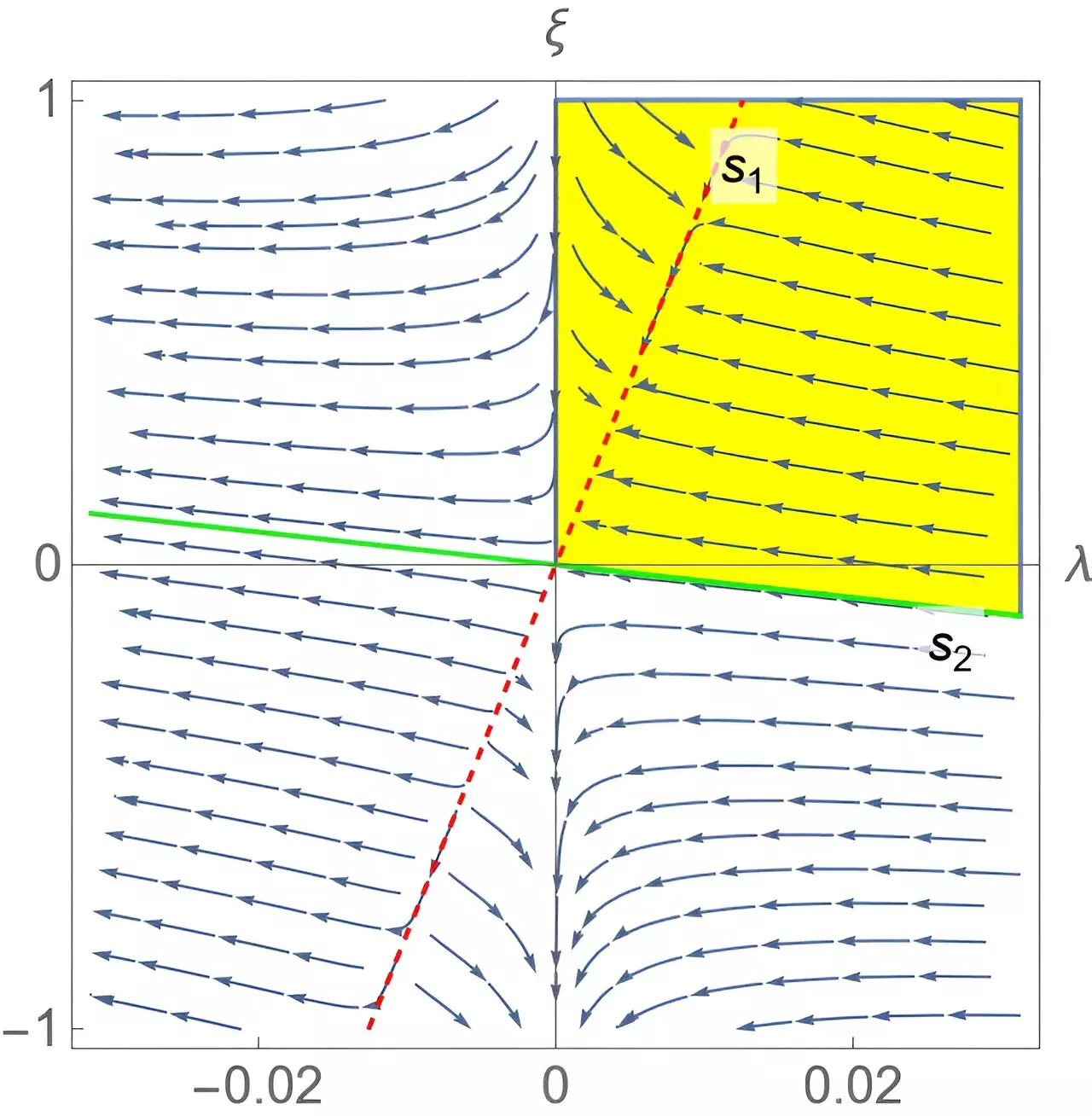The quest to understand gravity at a fundamental level has led physicists down many intricate paths. Recently, a groundbreaking research paper emanating from the International School for Advanced Studies in Trieste, the University of Massachusetts, and the Instituto de Física Teórica at Universidade Estadual Paulista in Brazil has paved a new avenue in this ongoing journey: quadratic gravity. This emerging framework not only extends Einstein’s general relativity but also presents a tantalizing possibility for a unified theory of gravity that could bridge classical and quantum mechanics.
Quadratic gravity introduces local terms that are quadratic in curvature to the Einstein-Hilbert action, thus expanding the scope of gravitational phenomena it can describe. This theoretical model takes into consideration complexities that classical theories often overlook, which could mitigate several longstanding challenges in the traditional understanding of gravitational interactions. The authors, including co-author John Donoghue, assert that their findings are not merely academic; they hold the potential to revolutionize the way we perceive and engage with gravitational forces across all scales.
The Importance of Beta Functions
At the heart of this study lies the beta function, a crucial mathematical tool that portrays the behavior of couplings in quantum field theories (QFT). A coupling constant’s “running” signifies how it changes with energy scales, shaping the interactions within a given theory. Donoghue emphasized that understanding these beta functions is critical, as they may reveal insights into the high-energy behavior of theoretical frameworks like quadratic gravity.
This research notably introduces new beta functions specifically tailored for quadratic gravity. The implications of their findings suggest that under certain conditions, the running of coupling constants within this theory could lead to asymptotic freedom, wherein these constants approach near-zero values at elevated energy levels. This is a pivotal discovery, as it negates the risk of uncontrollable coupling growth—a hallmark of instability in theoretical physics.
The New Techniques Revolutionizing Calculations
The researchers employ innovative techniques to assess the running of coupling constants, which add a fresh perspective to existing methods that traditionally yield congruent outcomes. The introduction of new calculative avenues allows for a refined understanding of the framework, as the previous techniques either fell short or displayed inconsistencies in the complex realm of quadratic gravity.
As Gabriel Menezes, another co-author, articulates, the capacity of this research to provide clearer insight into the analytic structure of scattering amplitudes and cross-sections could signal a paradigm shift in how physicists approach gravitational theories. This advancement in mathematical rigor not only adds credibility to quadratic gravity but also enriches the broader field of quantum field theories, where understanding is still evolving.
Promising Implications and Future Directions
One of the noteworthy implications from this research is the potential to describe various phenomena with low coupling constants that do not give rise to hypothetical tachyons—particles that would challenge our foundational understanding of physics. This is essential, as the stability of a quantum theory hinges on its ability to circumvent such hypothetical entities that suggest a breakdown of our current models.
The researchers hope that their innovative techniques will catalyze further studies that probe the depths of gravitational phenomena through the lens of quantum gravity. They are not merely resting on their laurels; there lies an eagerness to push these findings further, exploring topics like high-energy behavior and advanced scattering angles. By systematically decoding the complexities of quantum gravity, they aim to synergize our understanding of gravitational interactions more cohesively.
In an expansive journey that beckons collaboration across various fields in physics, the advancements made by Donoghue, Menezes, and their colleagues could indeed be the key to unlocking a more comprehensive theory of gravity. They are setting the stage for future discoveries that leap beyond established boundaries and foster a richer comprehension of the universe we exist in.
As researchers continue to delve into these theoretical frameworks, quadratic gravity stands as a beacon of optimism—a promising expansion of the gravitational landscape with the potential to redefine knowledge in both quantum mechanics and gravitational physics. The engagement with this emergent theory could lead us closer to untangling the historical enigma of gravity itself. The mathematical and conceptual tools we develop today are set to chart the course for a deeper, more integrated understanding of the cosmos.


Leave a Reply